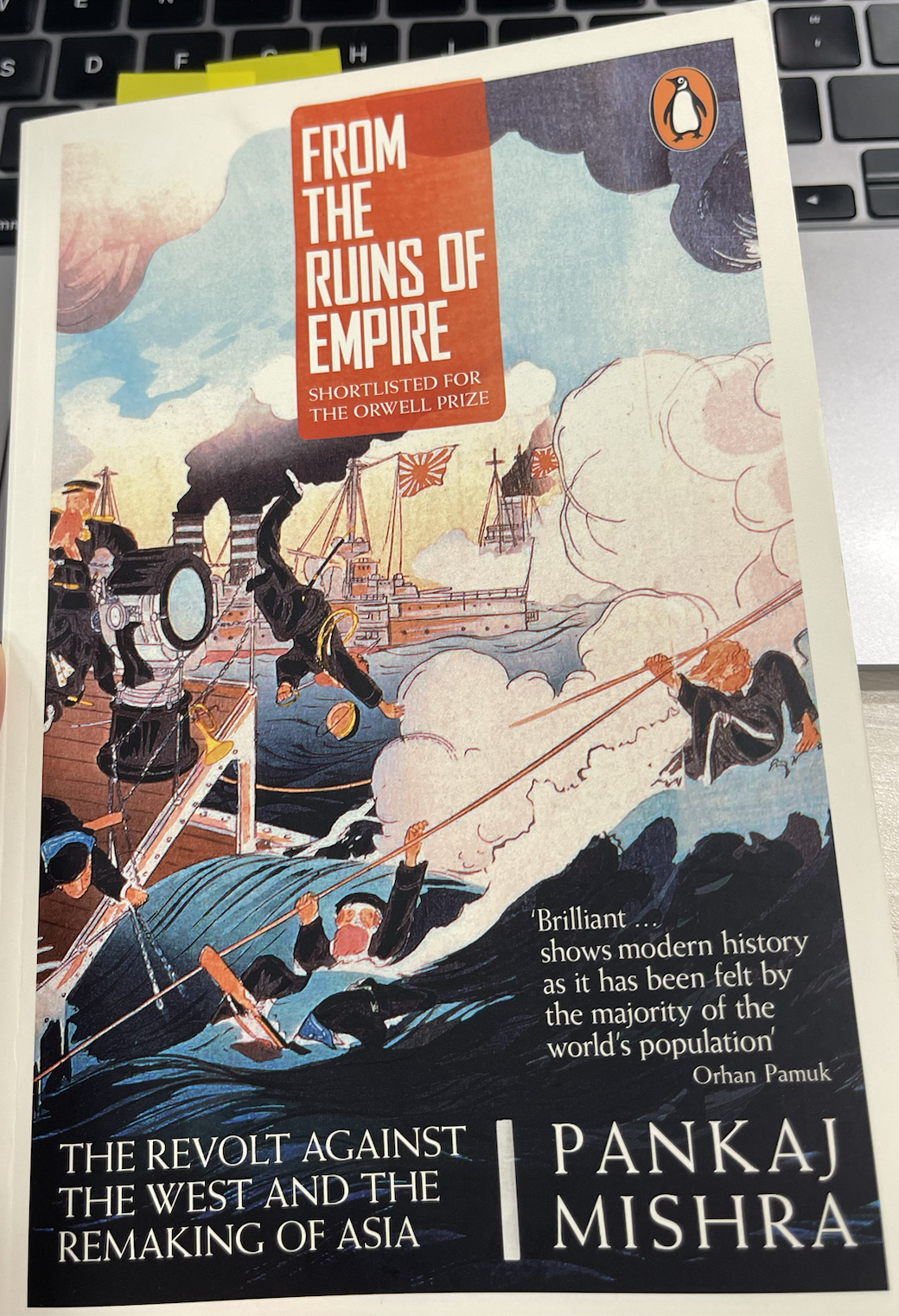From the Ruins of Empire by Pankaj Mishra
This book offers a nuanced understanding of the evolution of Pan-Asianism and the broader anti-colonial movements that continue to influence the region today.

Pankaj Mishra’s From the Ruins of Empire is a profound exploration of the intellectual and political responses to Western imperialism in Asia. The idea for this book came to Mishra in 2005, sparked by his reading of The Politics of Hysteria by William Pfaff and Edward Stilman. Written during the Cold War, this book highlighted the West’s profound ignorance of the disruptive impact of its long-standing presence in Asia. Mishra reflects on his own upbringing, where his education focused narrowly on Indian nationalism, with little understanding of the broader intellectual currents that shaped anti-colonial movements across Asia. To address this gap, Mishra embarked on a journey of extensive and serendipitous reading, drawing on influential works like Cemil Aydin's The Politics of Anti-Westernism and Erez Manela's The Wilsonian Moment. These works expanded his understanding of the diverse responses to Western dominance, laying the intellectual foundation for this sweeping narrative. His book meticulously charts the lives, thoughts, and struggles of key Asian thinkers—figures such as Jamal al-Din al-Afghani, Liang Qichao, and Rabindranath Tagore—who grappled with the profound disruptions wrought by the West's domination. Through these figures, Mishra provides a nuanced narrative of how Asian intellectuals sought to reclaim their dignity and reimagine their futures in a rapidly changing world.
The core theme of From the Ruins of Empire is the encounter between Asia and the West, framed primarily as a confrontation between the forces of imperialism and the nascent forces of anti-colonial resistance. Mishra portrays this as a "clash of civilizations," but one where the narrative is not solely driven by military or economic might. Instead, it is an intellectual and cultural battle, where ideas of nationalism, modernity, and identity are contested. Mishra asserts that this struggle is central to understanding the modern history of Asia.
In the first five chapters, Mishra focuses on the biographies of al-Afghani, Liang Qichao, and Tagore, weaving their stories into the broader tapestry of anti-colonial thought. Al-Afghani's Pan-Islamism and advocacy for a united Muslim front against Western encroachment highlight the diversity of responses to the Western challenge. Similarly, Liang Qichao’s shift from monarchism to a more pragmatic embrace of authoritarianism as a means of safeguarding China’s sovereignty underscores the complex spectrum of ideas in response to imperialism. Tagore’s critique of nationalism as inherently destructive, while still resisting Western cultural hegemony, adds further depth to this intellectual landscape.
A recurring theme in Mishra’s narrative is the tension between reform and revolution, which is vividly illustrated through the diverging paths of these thinkers. Liang’s initial support for reform evolved into a pragmatic acceptance of authoritarianism, reflecting his belief that China needed strong, centralized power to survive in a hostile world. In contrast, Sun Yat-sen and other revolutionaries advocated for a complete break from the past, promoting radical change as the only solution to China’s ills. This tension between reform and revolution reflects broader debates within anti-colonial movements across Asia.
Spatially, Mishra's book challenges the conventional understanding of Asia by illustrating how the region was interconnected by a shared experience of Western imperialism. The book spans from the Middle East to East Asia, demonstrating how intellectuals across this vast region grappled with similar challenges despite their diverse cultural backgrounds. This interconnectedness reshapes the reader’s understanding of Asia, not as a collection of isolated nations, but as a dynamic, transnational space of shared ideas and struggles.
Mobility and movement are also critical themes in the book. Mishra emphasizes how the movement of people—be it through travel, exile, or education—facilitated the exchange of ideas and the emergence of a Pan-Asian consciousness. Al-Afghani’s itinerant life, moving between the Ottoman Empire, Iran, and India, was instrumental in the dissemination of his ideas on Pan-Islamism. Similarly, the exile of Chinese intellectuals to Japan and the West was crucial in shaping their perspectives on nationalism and modernity. The movement was not just physical but intellectual, allowing for the cross-pollination of ideas that would shape Asia’s response to the West.
Print media plays a significant role in Mishra’s narrative, serving as the medium through which these ideas were disseminated across the continent. Newspapers, journals, and pamphlets became the tools of intellectual exchange, connecting like-minded thinkers across vast distances. Mishra details how Liang Qichao’s writings, smuggled back into China, galvanized a generation of reformers and revolutionaries, demonstrating the power of the written word in shaping political change.
Finally, the theme of exile is central to the story of many of Mishra’s protagonists. Banishment, whether self-imposed or enforced, became a catalyst for intellectual development. For many, exile provided the distance necessary to critically evaluate their homelands and to envision new futures. Mishra’s depiction of these exiled intellectuals underscores the paradox of exile as both a form of punishment and a source of creative energy.
In conclusion, From the Ruins of Empire is a compelling account of the intellectual history of Asia, offering a rich and complex portrayal of how Asian thinkers responded to the pressures of Western imperialism. Mishra’s book is a testament to the enduring power of ideas in shaping history and offers valuable insights into the continuing relevance of these intellectual struggles in today’s world.
Reference
Pankaj Mishra, From the Ruins of Empire: The Intellectuals who Remade Asia, New York: Farrar, Straus and Giroux, 2012.

